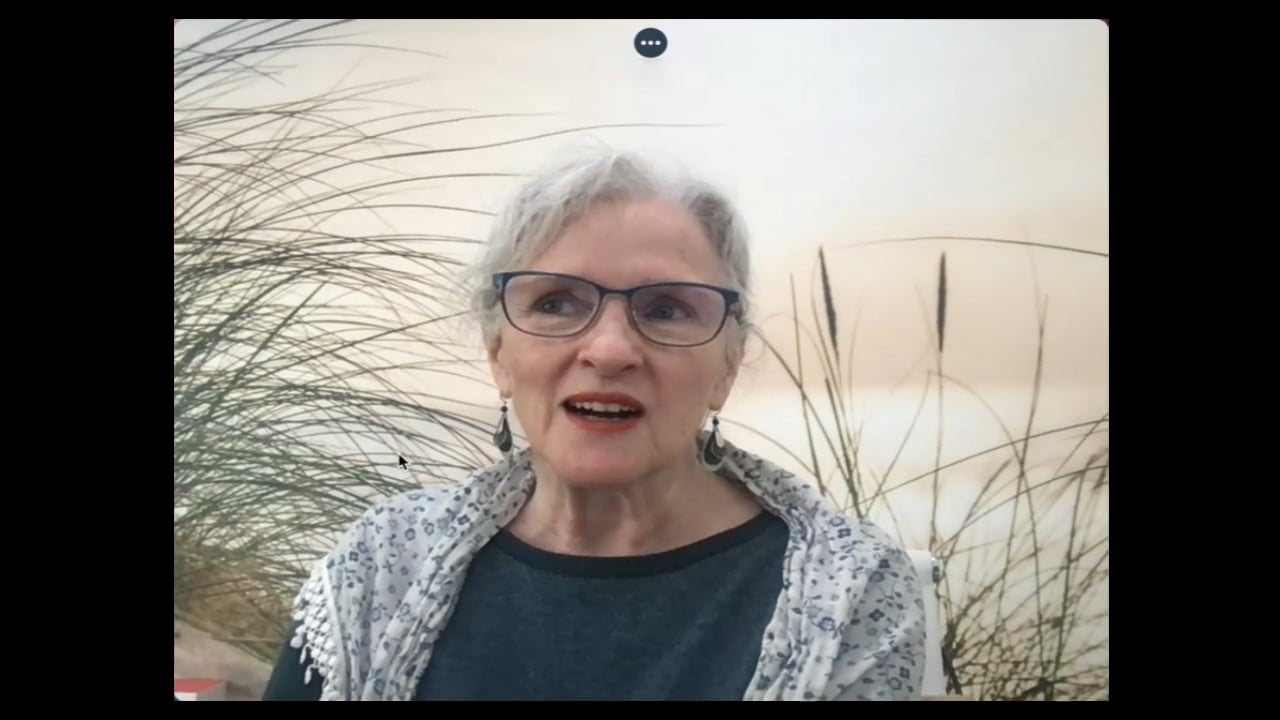A Reason to Hope - Unlock Your Brain's Potential
(Brain-Wise Series Videos)
A reason to hope? Is change really possible? I firmly believe so.
I pushed myself to review these videos that I made years ago. I realized the information is actually not only relevant but quite useful. Enjoy!

Dr. LaCombe, Psychologist and Rebel Shrink
I'm as passionate as ever about what I believe we can achieve with neuroscience. Please don't lose hope—there is a way out.

Deep, lasting change - pure transformation - is literally an “inside job”.
Brain research explains why: your nervous system must learn new ways to manage stress and emotion if you want better relationships, effective therapy, and a better quality of life overall.
In the videos below, I describe what really happens when we get stuck in crisis or freeze mode, whether in therapy or in daily life.
As you can see in the comments below, many folks agree with her ultimate conclusion: therapy has never been more relevant to personal change.
Inside Job #1 Reason to Hope
See transcript below.
Inside Job #2 Reason to Hope
[NOTE: The Brain Coaching Program = DeCoding the Brain]
See transcript below.
TRANSCRIPT: Inside Job #1
Hi, I'm Dr. LaCombe, or Shrinklady, if you've been by myshrink.com. If you've looked at my writing, you know that I'm pretty excited about neuroscience and the potential it has for changing the brain. Because as you know, if we change the brain, we change ourselves. And I've been using this in my practice. I've been experienced it myself as a therapist, as a therapy client. And it is huge, huge for changing the brain.
Because I get the impression when I'm talking to people about their therapy, I get the feeling that they're waiting for change to happen, like they're waiting for it to show up. But consider this, what if you had a pretty good idea and and how change actually occurs in the brain.
You could use it anytime because that's what this idea holds for people. It has the potential for changing the brain at a fundamental level. And I think if you're starting to make some change and you don't use this idea, then I think it's going to be hit and miss. So if you're interested, let's get started.
So I was chatting with a client one day, and she was saying a lot of her friends had tried therapy, but actually they gave up after three or four sessions. And she didn't quite get that because she was in her second year and she was trek along and actually making excellent progress. And I think what her friends were finding is exactly what goes on for a lot of folks.
hey go for only a few sessions. Like they go to therapy, but they find that it doesn't feel very good, and they suspect that it might even get worse. And they feel it in their gut. It's like they're just not sure about it, and then they give up on it.
I get these emails from folks telling me about their therapy all the time, and the impression I get from their stories is that the therapist is at such a distance. They feel like they're hanging out there. There's just not the support that's needed. The therapist is too far apart emotionally. And it's really hard when we're moving through the tough stuff. Some of the emails I get from folks, they tell me that they might be crying constantly in their sessions, and they can't stop.
But what's worse is that they're not feeling any better. You see, what's missing in their therapy is the emotional resolution that comes when the work is contained. It's like they show up for therapy like this, and they leave like this or like this.
So what do I mean by contained?
Well, your work is contained when your therapist is helping you move into emotions, and then more importantly, through them so that there's a feeling of being settled. So . . . so you walk out the door and it's not going to take you a whole week to put yourself back together again.
Like what's happening right now with this little girl, someone is trying to soothe her, and she's being contained. She's learning to self-soothe by being soothed from another. And her nervous system is learning this, and she's going to have that later in life to draw on.
You see, what I think is happening is that folks in therapy are going way outside their comfort zone, and the therapist isn't able to bring them back.
So let me explain. This is a diagram of a healthy nervous system. And what I want you to notice is the zone of comfort, because when the nervous system is healthy, we're operating here most of the time.
Whatever is happening is contained inside this window.
Now, it's not to say that you're not going to feel sad or nervous or mad from time to time, but these emotions are tolerable. You can manage them. They don't send you off the deep end or something.
But here's the thing, and this is the really important part of my message. If you're operating outside your zone, you're not going to be able to learn new behaviors or new emotional patterns, right? at's really cool, though, is that actually the best learning is on the edge. That's right.
The more you're in the zone, the easier it is to learn new things.
Now, here's the sad thing is that people are really hard on themselves because they don't realize when they're outside their zone that most of their brain power is being devoted to other things, survival things. at's really cool, though, is that actually the best learning is on the edge. That's right.
Here's what happens when your therapy is brainwise.
Now, let's take a look at what a good therapy session would look like. Okay, so you notice you're moving into crisis mode, but then back into the zone, or you're moving to freeze and then back into the zone again and again. And what's really cool, though, is that actually the best learning is on the edge. That's right.
Like the brain learns best on the edge of our comfort zone. And over time, your nervous system starts to act within the zone on a more regular basis, not just in therapy, but in your life. It's like that experience in therapy, and now it's changing your nervous system. And over time, the nervous system starts to even out. There's more flow. So when stuff happens, like the high anxious times or the lows, they get resolved a lot quicker, and then you're in the flow. You can manage what's coming your way. Your nervous system can learn a new way to be, like being more comfortable in your own skin or calm, even though a lot of stuff is happening around you.
And whether you're in therapy or not, you're going to learn best inside your comfort zone.
Here's the therapy connection. Folks are coming into therapy and they're not changing or maybe they're getting worse. You see, by the . . . at the end of the session, they end up in freeze mode. Maybe what got talked about takes them right out of the zone, or they're in crisis mode. Maybe something in the interaction between the therapist and them took them right into crisis mode.
See, it didn't get processed, and they're hanging out there.
But this is what needs to happen in your therapy sessions, where we're gently moved back into the zone every time we go out too far. The better that you and your therapist are actually able to accomplish this, the more your nervous system is going to move naturally into the zone like this. You're in the flow.
So my main message . . . the brain learns best inside your comfort zone, and in time, your nervous system will learn a new way to be. And this applies to actually most learning. It doesn't matter if you're in therapy or not, you will learn best inside your comfort zone. Learning anything outside your comfort zone is a chore.
In freeze mode or crisis mode, basically we're in survival mode, and there's just not a lot of space for new learning. To make real change, you need a healthy nervous system. That needs to be a priority before you get into the deep stuff. S
So before you get into deep emotional work, your nervous system needs to be ready. Your nervous system needs to be ready to start making those types of changes.
However, it is ready to make other kinds of changes, changes that will get your nervous system working better.
Okay, I know I'm introducing a totally new way of how we tend to move through things because this is exactly how the brain operates. When the brain is not working properly, it cycles in and out of crisis and freeze, and we can't get into the flow. That's the key to doing this new approach to making changes with fantastic results.
Okay, it's been great talking with you. I'll see you next time.
TRANSCRIPT: Inside Job Part #2
Hi, it's Shrinklady again. You would have watched the Inside Job Part One (above). Okay, today is Inside Job Part #2. And what you would have learned in the first movie is that life feels so much better if we're living it inside the zone.
Now, the problem is that too many people are living outside the zone in crisis or in freeze mode or cycling back and forth. And today, what I want to share with you is how you can reset your nervous system so that you're more consistently right in the zone.
Okay, so let's get started. Okay, so what I want to teach you right now is just a little lesson on the brain.
Now, when we feel an emotion, like I'm feeling anxious, like (let's say) I've got a presentation tomorrow, or I have a thought, I'm thinking about the presentation tomorrow, or I'm moving my body just I'm doing right now. There's a pattern that lights up, different areas of the brain light up, and we call that a neural net pattern.
Well, what a lot of people don't realize is that there's also a pattern of firing that's going on in the body, and we call that an arousal pattern.
Let me just back up for a moment. Okay, so with this presentation tomorrow, what's happening in my body is, like I've got a knot in my stomach, my chest It's tight. My shoulders are up here. The thing is, I barely notice those things. They're there, and sometimes I dip in and I feel them, but sometimes a lot of time, most of the time, I'm in my thoughts.
I'm trying to figure out how I'm going to get out of feeling anxious about this presentation tomorrow. I'm thinking about people being naked. No, that doesn't make any sense. You know what I mean?
Have you heard that? Oh, of course. Yeah. Think of people being naked. Well, anyway, it doesn't help. I'm still anxious, but in my head, I'm thinking, I've got to figure this out. And it doesn't occur to me. The last thing I want to do is to dip in to my body and feel those uncomfortable sensations. And this part is so important. You see, when I'm worried about the presentation tomorrow and I'm mulling it over in my head, the thing that's making it hard for me is the sensations in my body.
That's the thing I'm trying to get away from. The more I'm in my head, I actually distancing myself from those feelings.
Now, that's the problem, of course. It's a good thing in some I don't feel those quite as heavily as I would otherwise. But it's also a problem because if I don't go into my body, I'm never going to change it. But that's what I was having you do in the 12-second chill, right? Just dip in and feel them, and you just noticed how you just dropped a bit.
Now, the problem is doing the 12-second chill is pretty tough. Well, what I teach people is how to go into your body in a much easier way. And by doing that, you can change. When you start changing how you feel here, you start training your brain. You start teaching your brain how to manage that energy much more effectively than trying to think your through, how am I going to get out of this thing? I'm training my brain how to manage this pent-up energy, right?
So if you're flipping out about something or you're feeling like, I just got to get away, or you're feeling anxious, All of those different kinds of energies, you work with them differently.
But all of them train your nervous system. They start to reset your nervous system. Over time, you start living your life in the zone.
So what does it feel like to live your life in the zone? Well, it's like taking a walk on the beach and actually enjoying it because you feel more settled inside. You can receive these good things or your boss is angry at you. And instead of going into reaction mode, you're able to sit back, think of solutions, figure out what to do next, and then proceed.
So . . . and the best of all is having an open heart in your relationships, like with your partner and your family.
Okay, so what I teach in the Brain Coaching program [DeCoding the Brain] is how to drop in into your center, into that place where you feel good about yourself, and then operate from there to live your life.
And that's what I want for you because it is possible. So I'll see you on the inside. All right, bye now.
Reflections about the Brain-Wise Series
Mellerbe
Shrink lady – you rule!!!! thanks for this. It makes perfect sense to me – well put together presentation that speaks clearly to non-psychologists…
Joy
Again some really fascinating insights which I want to use in my relationships. I’d love to be more chilled about other people’s annoying habits!…I really like the simple example in the movie of not reacting to the partner dropping clothes on the floor. ..
Victoria
I have just listened to your movie for a second time and bells rang and lights came on. Big bells, bright lights! This is marvelous and I am so excited. Very many grateful thanks to you, and pleeeeeeeze keep going and sharing your ideas and thoughts with us.
Vikki
I have loved both your movies because oh boy I have learned so much from them! So much applied and applies to me. Now I simply have to find a way of staying or at least spending much more time in my Comfort Zone…..Thank you for literally letting me see such things even exist.
Shirley
It totally relates to my life…. Thanks Susan, it makes soooo much sense, looking at it that way. Always a pleasure reading (listening to) you.
Lisa
Thanks for the video – it is very good and you are a clear communicator as well as conveying instant warmth and caring.
Lesa
I’m actually a college student studying to be a counselor so this really interests me.
Becoming “brain-wise” will actually help me in the long run I think. Thanks for the videos!
Sarabb
I think it’s fascinating and I love the way you are personalizing it and putting it all into understandable bytes….I’m looking forward to finding out more about how to take active steps towards creating change for myself. Thanks!
Monica
I am excited about this series. I love learning new things. While I was listening to the slides, I evaluated my current therapy experience.
Soulfuldaze
Great presentations Susan, thank you so much for making these. I love to see a professional step out of their “comfort” zone in order to reach out and help more of us.
I do agree that, great wisdom through painful experience…is an inside job. I truly appreciate and applaud your efforts to make it more understandable for everyone.
I will continue to read…watch….and learn. Thanks again…
Joy
I loved this movie – thank you so much for this! It explains a great deal why some of my past therapy experiences have made me feel worse, not better. The explanations about containment and comfort zones are especially enlightening about this. Also the info about the way the nervous system and the brain work really makes sense. Brilliant stuff – every therapist should know about it.
Morph
thanks for pointing up that “couch potato” is an identifiable problem, on the spectrum of things needing therapy. I have tended to see it as my fault, something I just need more self-discipline to overcome.
Allison
This video really spoke to me. I work as a trauma counsellor and find discussions around the nervous system to really help normalize client’s difficulty with post-traumatic responses (eg. depression, anxiety, dissociation….For me (and I believe The Shrink Lady has some awesome info on the website) it’s strongly about discharge…P.S. I really liked the idea of using a Rainbow analogy. Very creative
Evelyn
Makes perfect sense and you explained it so well. Can’t wait to learn more.
Great job!
Rachel
I love this. You explain it so simply and clearly, Susan. I will be blogging about this video today.Thanks for being a great resource for therapists and clients!
TP
Great video! This helps me not be so hard on myself and to allow myself to go in and out of the zone. You hit a key point about the emotions and being in the comfort zone before going there. Thanks for sharing this great informatinon!


I love the movie, I make so much sense and I have a whole lot more insight into my own growth.
I cannot wait to see part two.
I also wanted to say I think touch therapy is needed badly. As I child I was never held nor told that I was loved and I find that I have this longing for my therapist to hold my hands or give me a hug when I having a major melt down.
I think it does not happen because I am gay and maybe she will think I may feel something for her. Just guessing.
I am not sure, but I did mention touch therapy to her and I felt stupid that I did when she basically told me it will never happen and that I should give myself a hug when I feel the need for a hug in therapy. I am still angry with her for saying that to me. But, other than that she does good work with me and has helped me a great deal.
Audrey